Simone Leigh’s L.A.-bound sculptures, now in D.C., are stirring and elegant
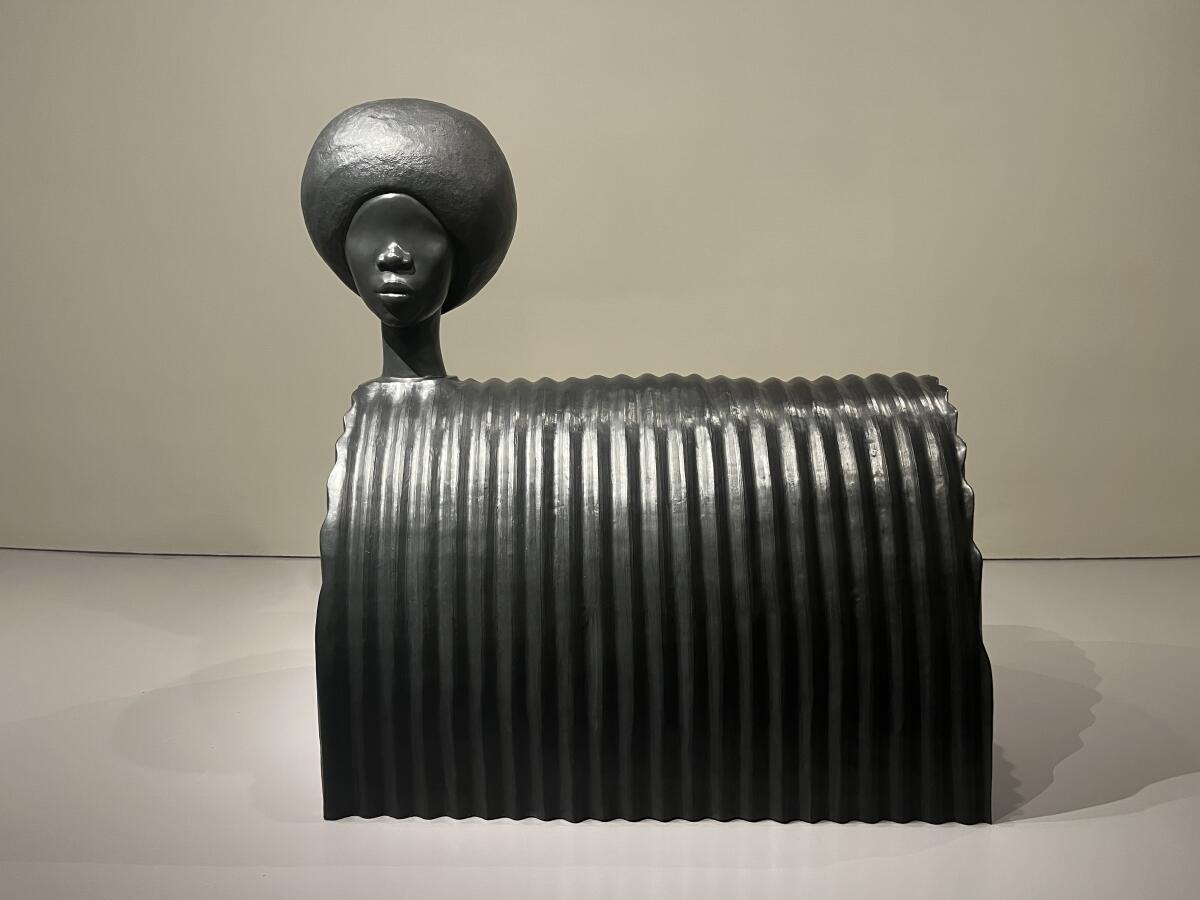
I am currently on jury duty, using the lawyers’ many sidebars to write this newsletter, which is also a sequence of sidebars. I’m Carolina A. Miranda, cog in the U.S. judicial system and art and design columnist at the Los Angeles Times, and I’m here with all the essential arts news — not to mention some architecturally significant tinned fish:
Leigh’s beguiling hybrids
I didn’t make it to the Venice Biennale last year. But I did make it to Washington, D.C., early last month, where I caught Simone Leigh‘s fantastic solo show at the Hirshhorn Museum and Sculpture Garden.
Titled “Simone Leigh,” the exhibition features numerous works from her Biennale installation, in which she famously draped the U.S. pavilion in thatch, transforming the building’s neo-Palladian façade into a piece of African architecture. (The gesture nodded to a 1931 Parisian expo in which various European metropoles showed off the architecture of the countries they’d colonized.) The show also featured a 24-foot-tall sculpture titled “Satellite” in its exterior courtyard — a female form with rounded head inspired by West African D’mba ritual headdresses. That piece too is at the Hirshhorn, fronting the museum on Independence Avenue.
For the record:
10:39 a.m. Dec. 5, 2023A photo caption on an earlier version of this article misstated the title of a Simone Leigh sculpture. It is “Sentinel,” from 2019, not “Untitled,” 2023.
Also in the exhibition are several new bronze sculptures, fabricated this year, which continue Leigh’s long-running exploration of African art and the Black female form. Among them is a remarkable work titled “Herm,” which features a faceless Black figure whose body appears to be slipping out of the vertical plinth that encases it.
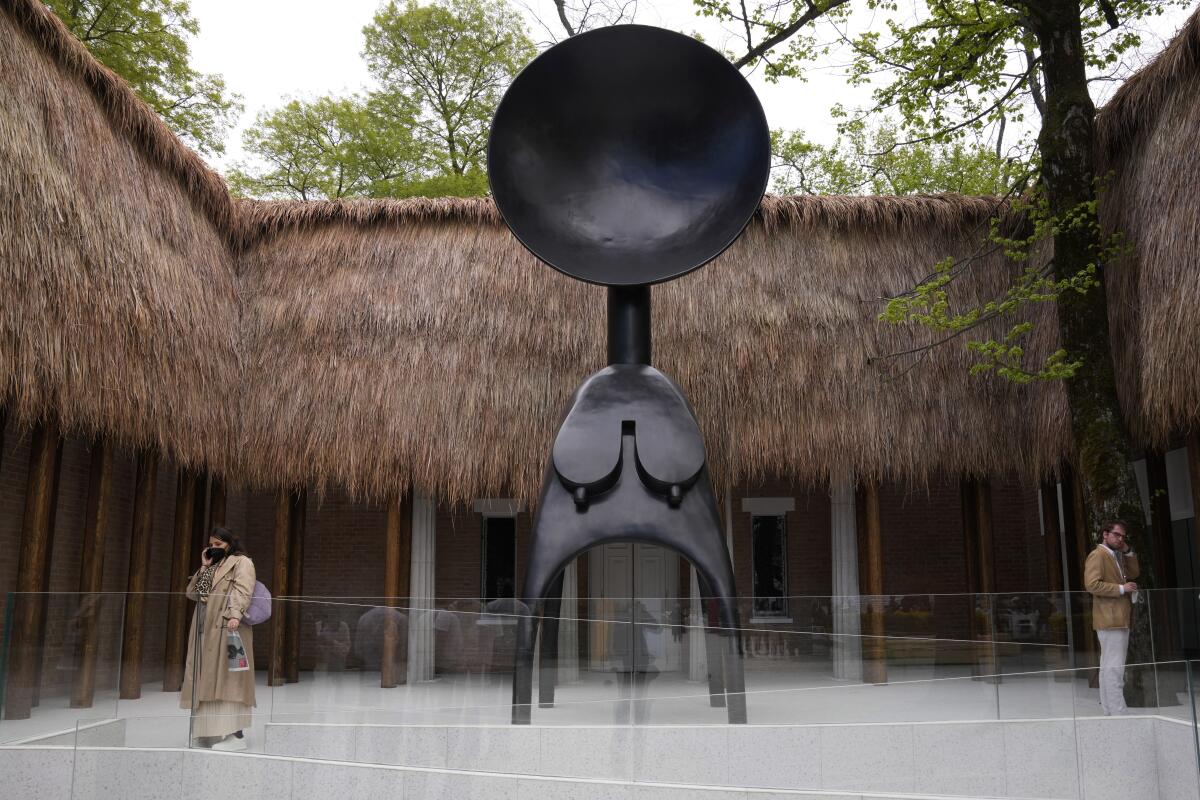
“Simone Leigh” originated at the ICA Boston (the institution that commissioned Leigh’s installation for the Biennale) and was organized by Eva Respini with Anni A. Pullagura. After it completes its run in D.C., the show will make its way to L.A. for a joint presentation by LACMA and the California African American Museum. (That leg of the show will open in June and run through January 2025.)
But I was glad to be able to catch Leigh’s show while it’s on view at the Hirshhorn — because the installation will be hard to beat.
You’re reading Essential Arts
Make the most of L.A. with our guide to events and happenings in the SoCal arts scene. In your inbox once a week.
You may occasionally receive promotional content from the Los Angeles Times.
Leigh’s sculptures consist of oversized female forms and large-scale architectonic pieces and, frequently, hybrids of the two. A head of a woman might emerge from a Quonset hut, or from a ceramic cube inspired by the patterns of textile blocks. She often depicts women as vessels (literal jugs), signifying their work as carriers — of ideas, of life, of bodily processes and all the traumas that go with.
Her figures can be aloof and sphinx-like, since they don’t have eyes. They are also deeply sensuous: rounded forms, buoyant skirts and supple glazing. (Stoneware is one of Leigh’s preferred mediums.) And the Hirshhorn’s rounded architecture, with its gently curving walls, feels like just the right vessel for these vessels.
Moreover, the sparse installation lets Leigh’s pieces breathe. Each gallery feels like a chapel, drawing the eye to a bold color, the drape of dried raffia, the ways in which “Sentinel IV,” a bronze inspired by the anthropomorphic design of Zulu ceremonial spoons, seems to defy gravity. (The show feels like a rejoinder to the ethnographic stuffed-in-a-vitrine displays to which so much African art has been subjected in the West.)
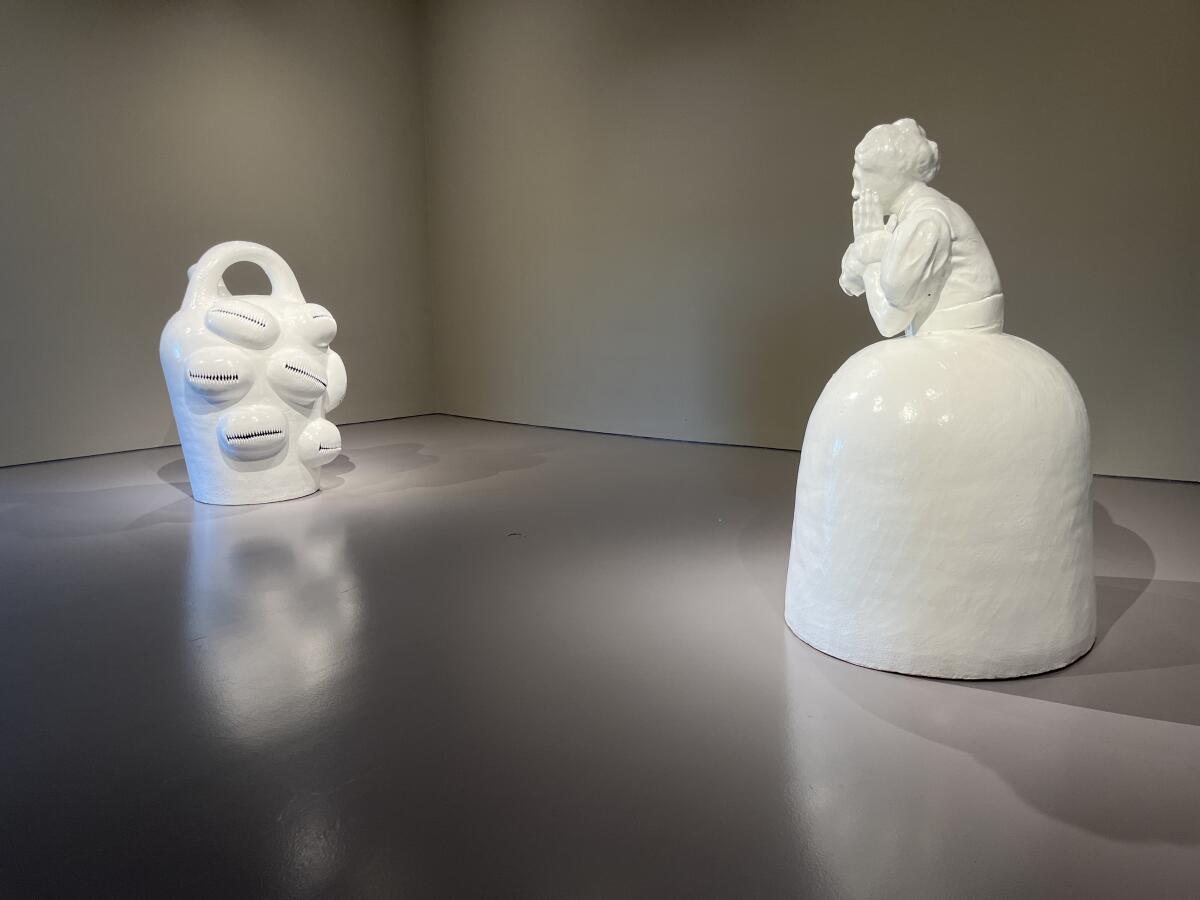
The building’s circular shape creates an ideal path for navigating the show. Complete the circle and you can seamlessly begin the journey anew through Leigh’s gorgeous, timeless figures.
“Simone Leigh” is on view at the Hirshhorn Museum through March 3 in Washington, D.C.; hirshhorn.si.edu.
On and off the stage
“Waitress” was not the Broadway hit anyone was expecting, writes The Times’ Ashley Lee. But the musical, about a woman who wants to open a pie shop but unexpectedly gets pregnant, has nonetheless struck a chord with audiences. “In making its characters’ commonplace concerns the stuff of an upbeat, crowd-pleasing musical,” Lee writes, “‘Waitress’ connected with, and ultimately won over, what might be Broadway’s most underappreciated audience: women.”
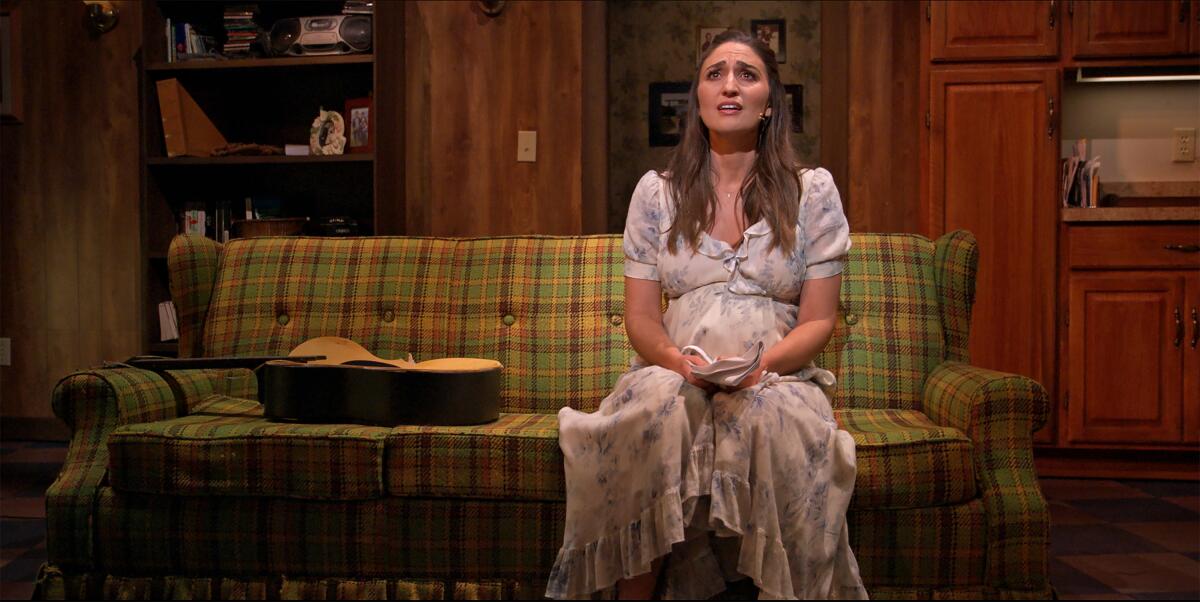
Off-Broadway, Aubrey Plaza (“The White Lotus”) is appearing opposite Christopher Abbott in John Patrick Shanley‘s 1983 play, “Danny and the Deep Blue Sea,” directed by Jeff Ward — one of the season’s hot tickets. Times theater critic Charles McNulty was there — and reports back on Plaza’s off-Broadway theater debut.
While in New York, McNulty also checked out a new jukebox musical at the Public Theater that is inspired by the life of Alicia Keys. “Hell’s Kitchen,” directed by Michael Greif, and featuring a book by Pulitzer Prize finalist Kristoffer Diaz, has Keys’ incredible music and some extraordinarily talented performers. But, writes McNulty, “There’s a more ruthlessly honest version of this coming-of-age story waiting to be told.”
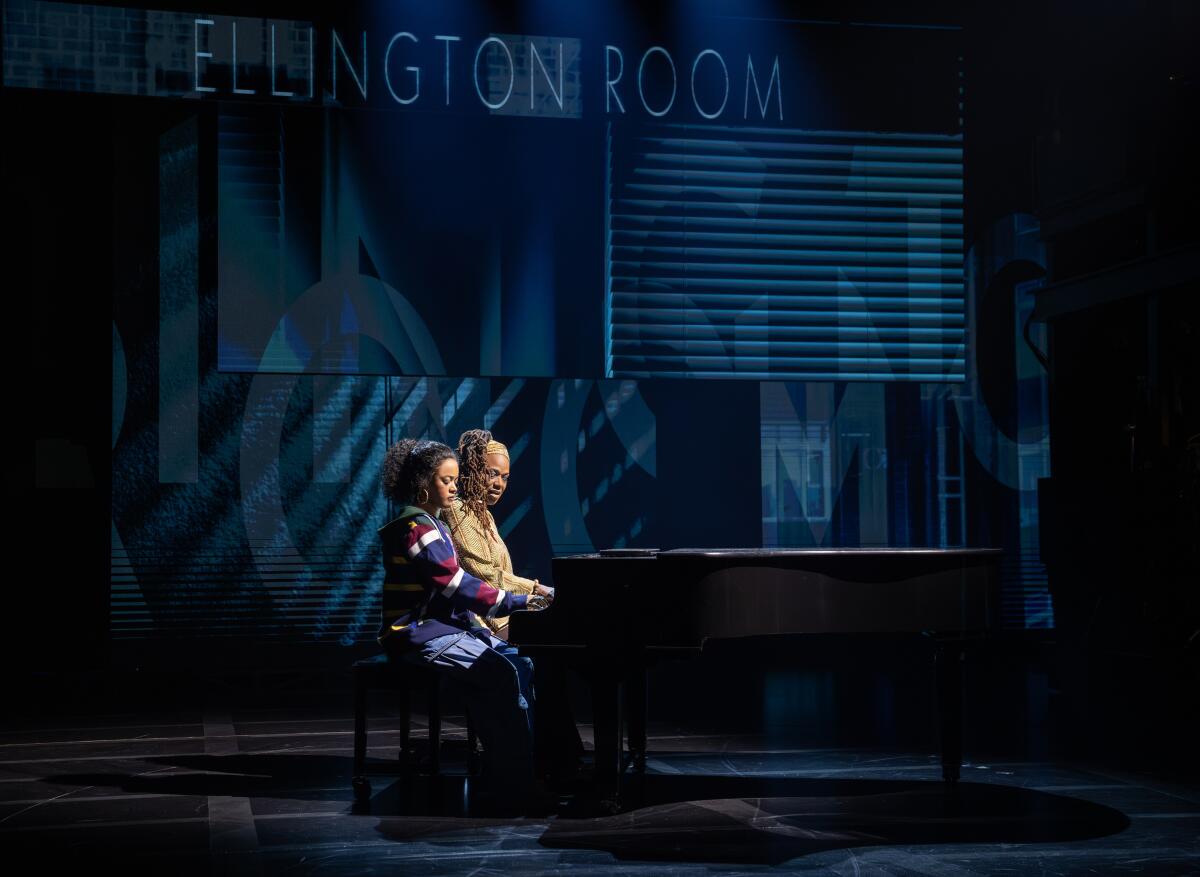
My colleague Jessica Gelt has a look at how “Dog Man: The Musical,” currently on view at the Kirk Douglas in Culver City, came to be. Inspired by Dav Pilkey’s “Dog Man” children’s books, the musical has been received ecstatically by kids who show up to productions decked out in costume ready to dance along..
Dispatches from the field
Times art critic Christopher Knight has a mini-dispatch on the whereabouts of Georges de La Tour’s “Magdalen.”
In 2019, LACMA finished packing up its huge encyclopedic art collection, in anticipation of tearing down much of its campus, and sent most of it off into deep storage. Among the exiled works was arguably its signature European masterpiece, Georges de La Tour’s serene painting “The Magdalen With the Smoking Flame” (c. 1635-37).
The pensive Magdalen later turned up parked at Oregon’s Portland Art Museum, but it was M.I.A. from L.A. for almost four years. Happily, the La Tour resurfaced here this fall at the Getty Museum, hanging next to the artist’s earlier — and anything but contemplative — “The Musicians’ Brawl” (c. 1625-30), a marvelously raucous, closely observed picture of quarreling street musicians. (It joins great Mannerist paintings there by Hendrick Goltzius and Rosso Fiorentino, also loaned by LACMA.) The La Tour will be at the Getty at least through July, according to a spokesperson.
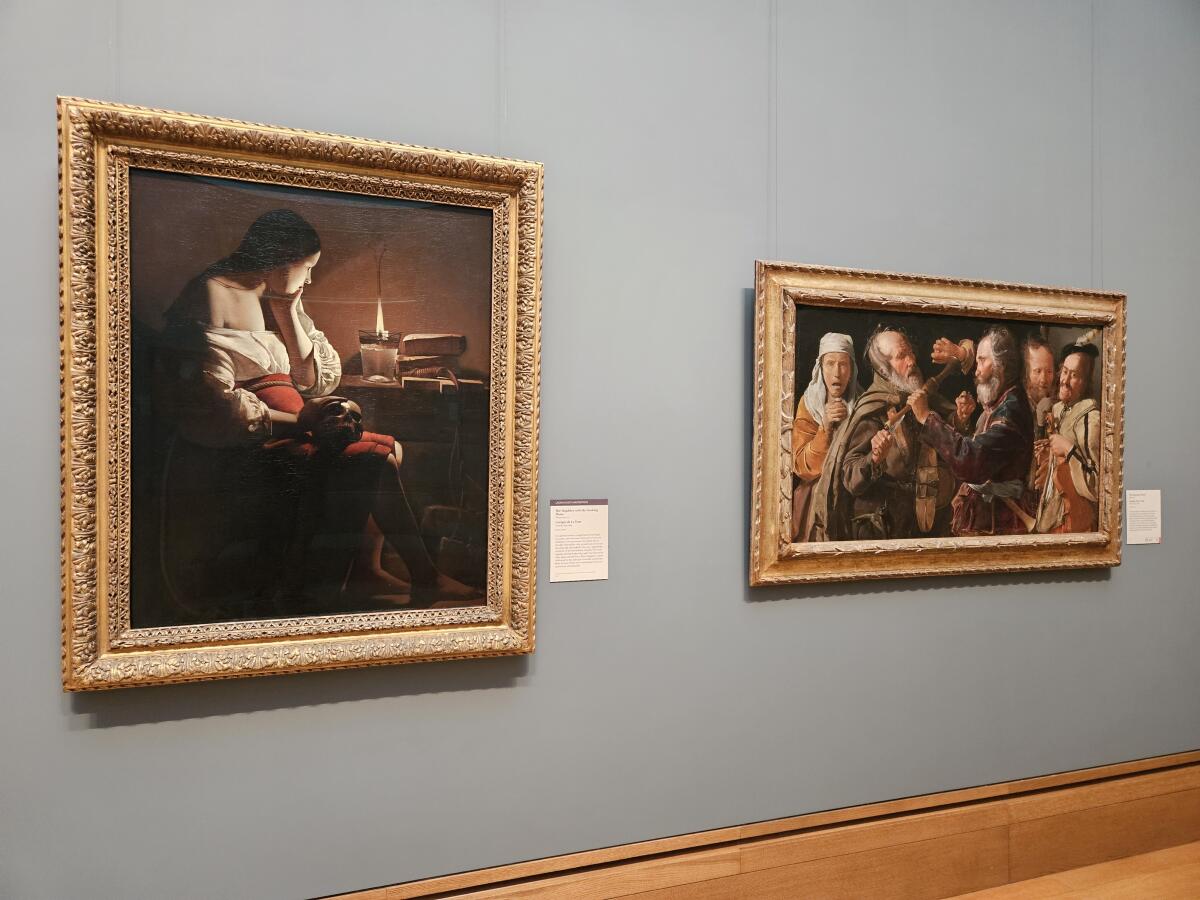
Classical notes
“El último sueño de Frida y Diego,” with libretto by Nilo Cruz and music by composer Gabriela Lena Frank, has taken the story of Mexico’s most famous art couple and turned it into opera. And it is now onstage at L.A. Opera. Andrea Flores, of The Times’ De Los team, has a look at what went into the making of this singular production.
The San Francisco Chronicle‘s classical music critic, Joshua Kosman, reviewed the show after it premiered in the Bay Area. He described it as “luminous and irresistible,” but with a few dramatic shortcomings.
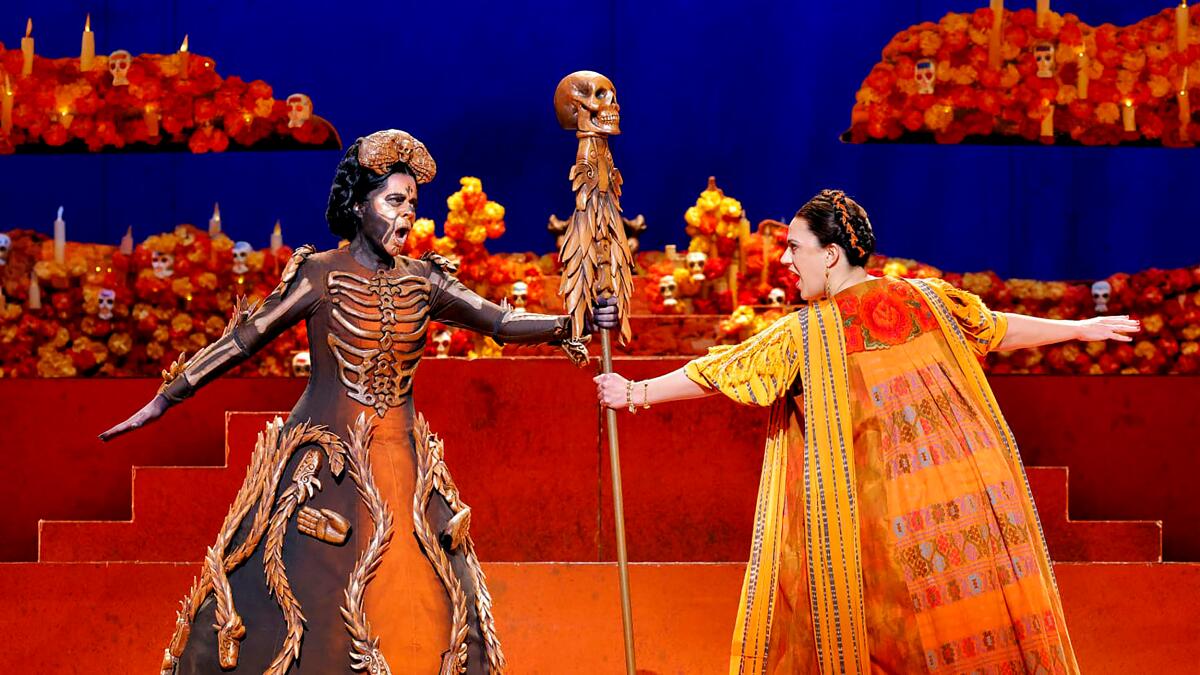
In and out of the galleries
In a warehouse in Boyle Heights, a series of forgotten carnival attractions, designed in the 1980s by a group of artists that included Jean-Michel Basquiat, Keith Haring, David Hockney and Roy Lichtenstein, has been brought back to life through careful conservation. Luna Luna will reopen to the public sometime this month thanks to a consortium that rescued the rides from shipping containers in Dallas.
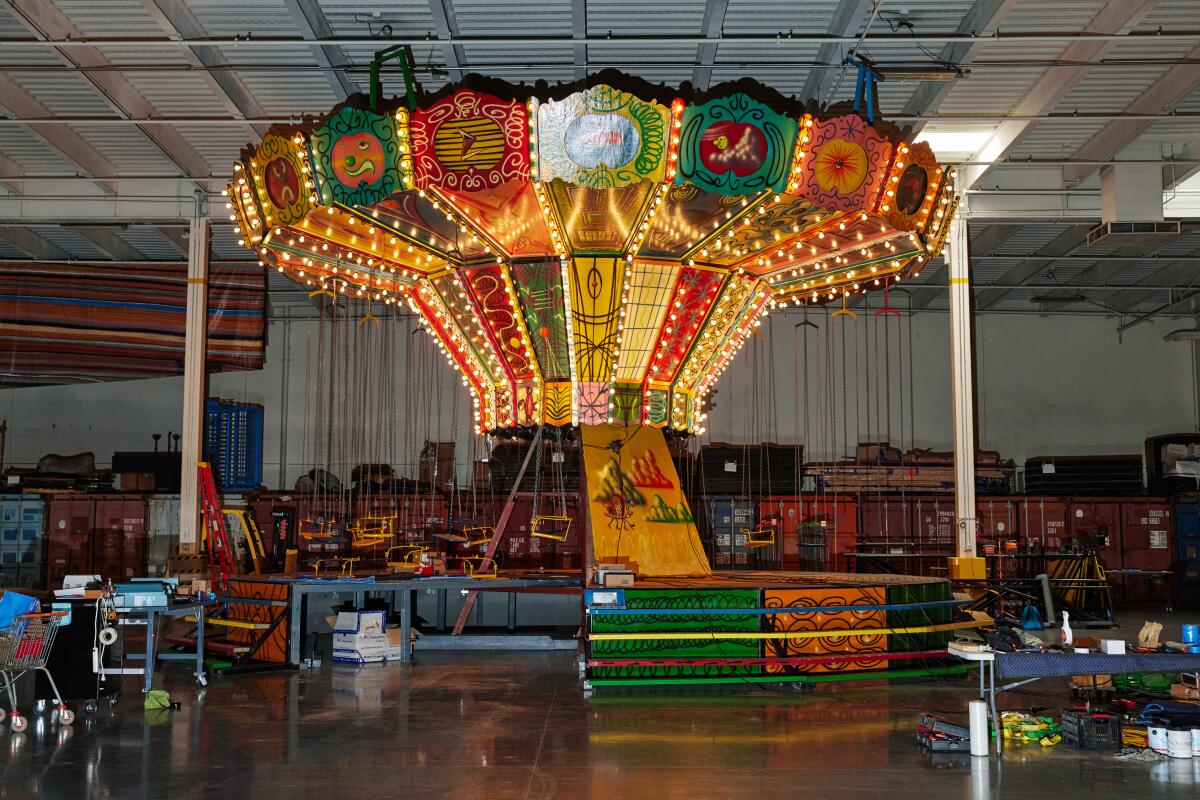
In her new book, “Art Monsters: Unruly Bodies in Feminist Art,” Lauren Elkin looks at how women’s bodies materialize in their art. She chatted with Times contributor Jessica Ferri about her work — and how it was shaped by the experience of childbirth. “Now I know what the monstrosity of the body is.”
Enjoying this newsletter? Consider subscribing to the Los Angeles Times
Your support helps us deliver the news that matters most. Become a subscriber.
Hyperallergic’s David S. Rubin reviews Abel Alejandre‘s show at Launch Gallery, a surreal, Chicano twist on the space race.
This is now a tinned fish blog
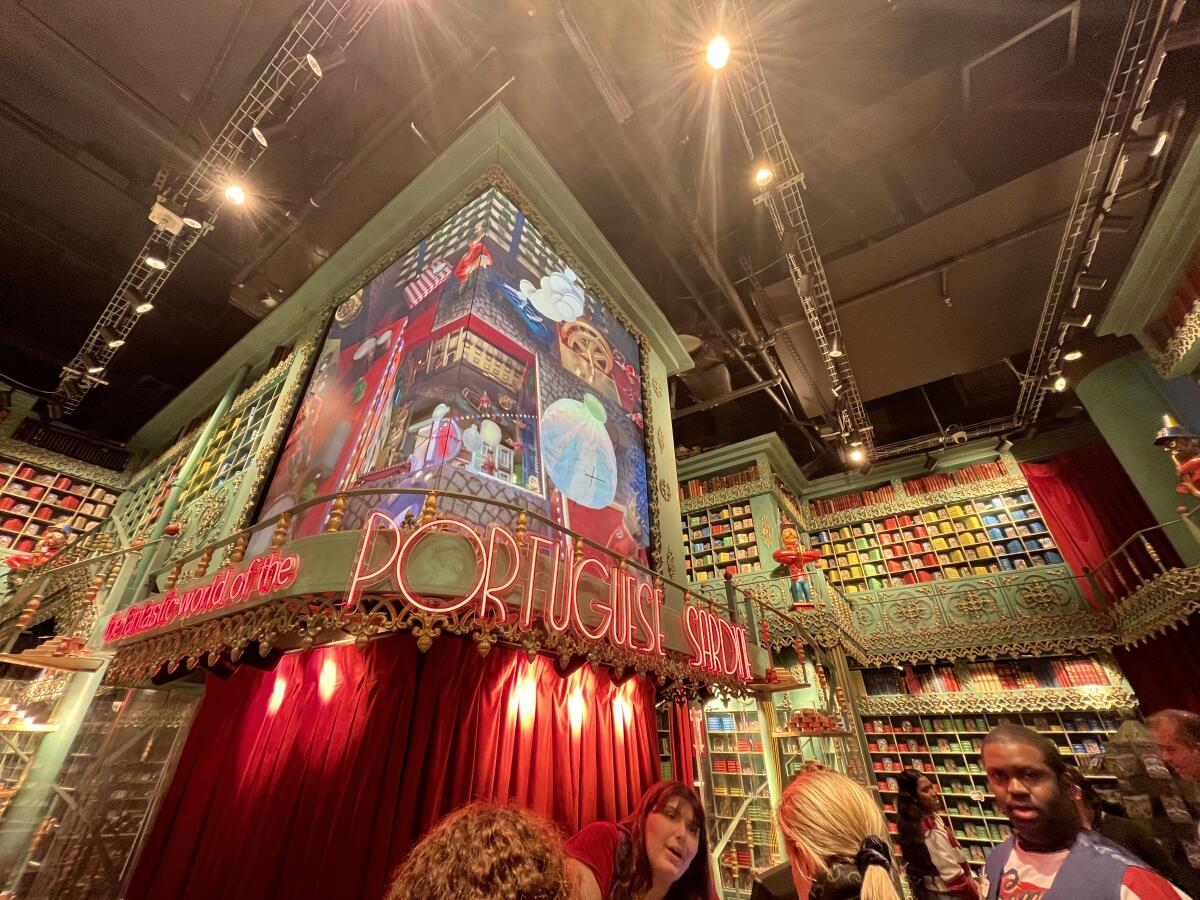
Thanks to my eagle-eyed editor Boris Kachka, who sent me this Eater post by Robert Sietsema, I was able to make it to the Fantastic World of the Portuguese Sardine while I was in New York City last month — and it did not disappoint. A Times Square boutique devoted to Portuguese tinned fish (primarily sardines), the shop opened in August and is run by Comur, a Portuguese fishing and canning concern.
The interiors are all neo-Manueline, a revival style of late Gothic architecture initially associated with the reign of Emperor Manuel I of Portugal in the early 1500s, and which came roaring back to life in a revival style in Brazil during the 19th century. The TikTok-famous Royal Portuguese Cabinet of Reading in Rio de Janeiro, founded in 1837, is perhaps one of the best known examples of this delicate, ornate style.
Instead of historic tomes, however, the Fantastic World delivers fish. And it does so in attractively designed specialty tins, a whole wall of which were inspired by cultural and historical events organized by year. (I was happy to find shoutouts to Octavio Paz, Primo Levi and Jorge Amado, among others.) The shop, quite incredibly, turns buying tinned fish into an absolutely fetishistic experience. (Like being in an art gallery!) And before I knew what was happening, I found myself, like some sort of hallucinating sailor, clutching sundry tins of codfish and smoked mussels — along with a hefty credit card bill.
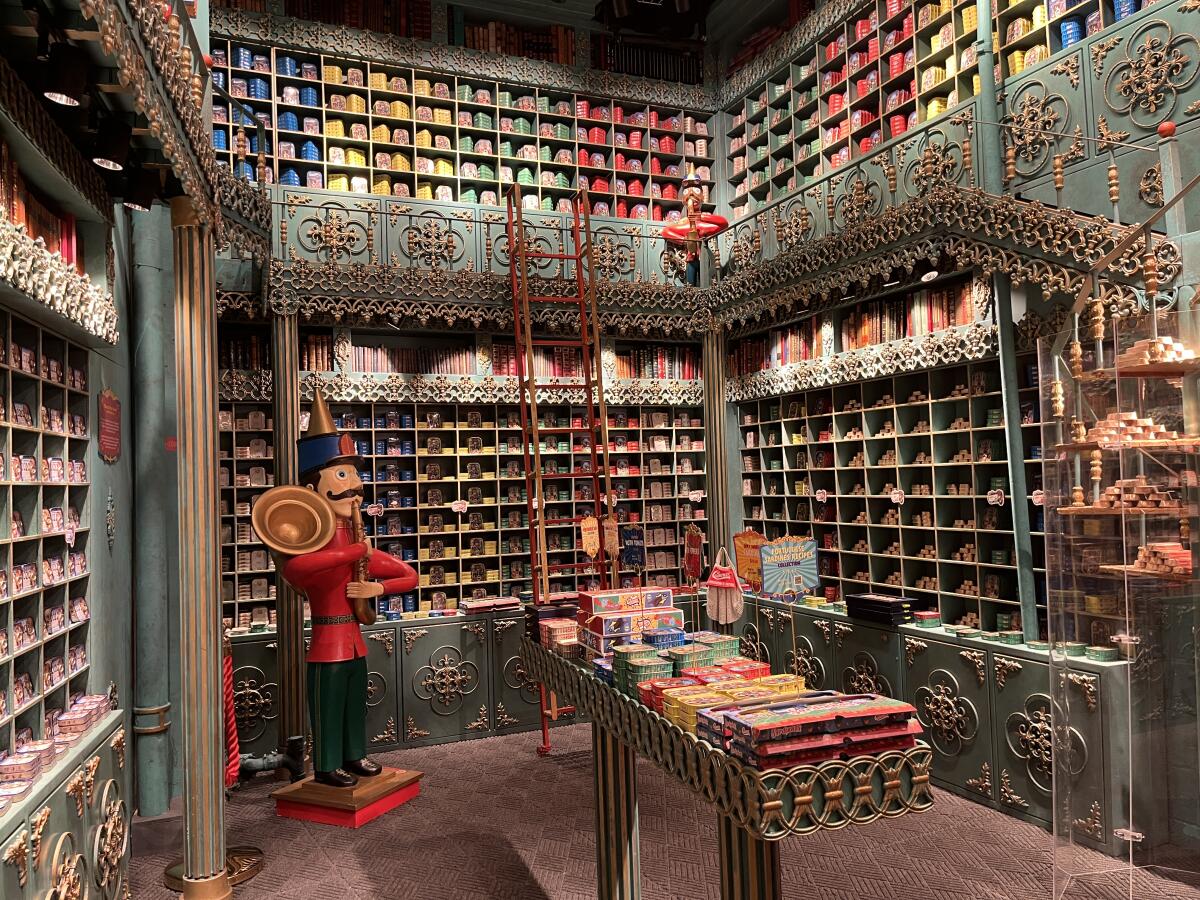
As far as aesthetic experiences go, it’s 9/10, do not miss — just behind the Met‘s European paintings gallery. Here’s hoping it inspires the Dongwon spicy canned tuna company of South Korea to develop a similar enterprise in Los Angeles. I’ll be first in line.
Find the Fantastic World of the Portuguese Sardine on Instagram @portuguesesardine.
Essential happenings
The Times’ Steven Vargas rounds up all the latest openings — including Hugh Hayden‘s first solo exhibition in L.A. at Lisson Gallery — as well as where you can see the best “Nutcracker” ballets!
Plus, the Chinese American Museum, LA Plaza de Cultura y Artes and the Japanese American National Museum are teaming up, in collaboration with the Smithsonian Initiative, for a series of public programs related to race and racial reckonings through Dec. 17.
Moves
Painter Mark Bradford has been named the recipient of the 2024 Getty Prize.
Architects Anne Lacaton and Jean-Philippe Vassal are the winners of the 2023 Soane Medal.
The Los Angeles Business Council has announced the winners of its 53rd Architectural Awards, which include the revamped Herald Examiner building in downtown, which took the grand prize.
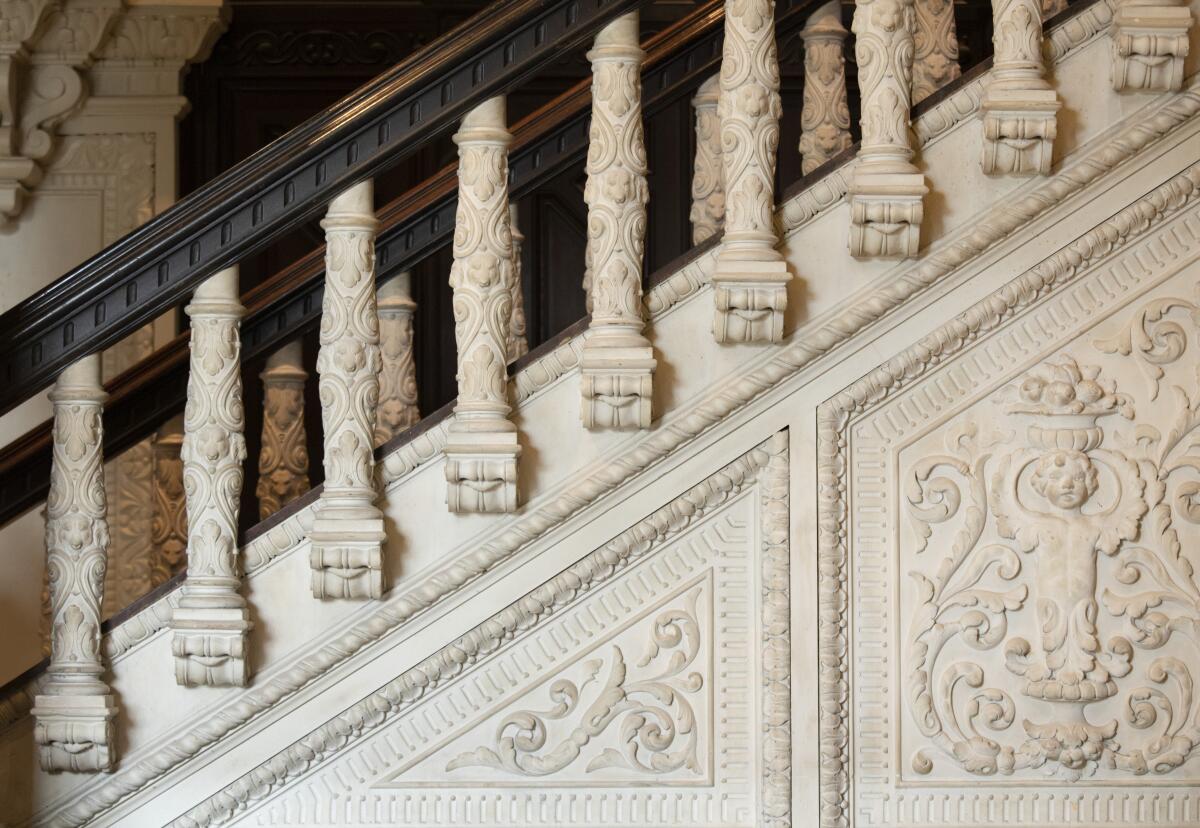
The Mellon Foundation has doubled its commitment to its monuments program to $500 million. The initiative has helped expand the range of people and concepts honored in public spaces.
The Warhol Foundation has announced the 27 recipients of its 2023 Arts Writers Grant and they include Silvia Benedetti, Chelsea Haines and Sahar Khraibani.
Passages
Radcliffe Bailey, an artist whose sculptural assemblages included his grandmother’s tintypes, and who chronicled the narratives of Black life, has died at 54.
Photographer Larry Fink, whose piercing black-and-white images recorded the vagaries of privilege, poverty and social class, is dead at 82.
Another important photographer was lost this week: Elliot Erwitt, known for his photos of a grieving Jackie Kennedy, as well as for pictures that found humor in daily life, is dead at 95.
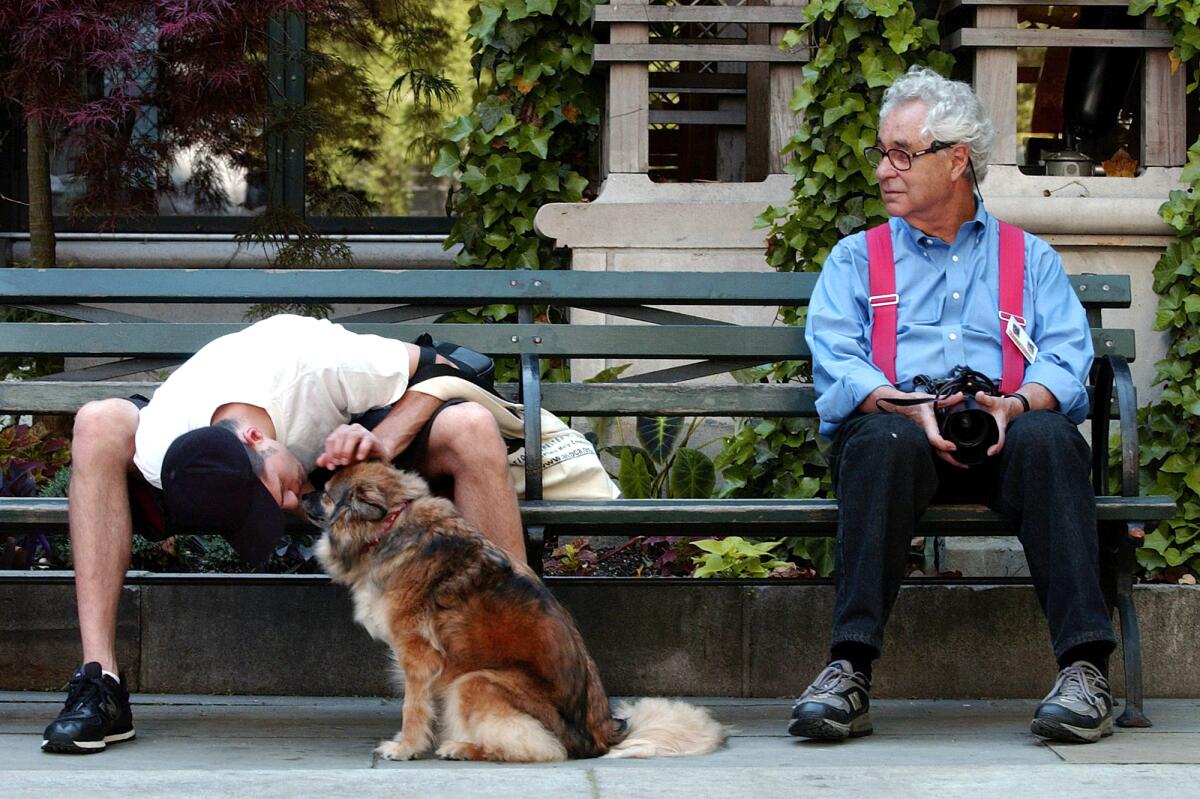
Charles Munger, moneyed mogul who purveyed lightless dorm designs for UC Santa Barbara, has died at 99.
Henry Kissinger, Manhattan social butterfly and Machiavellian architect of (literally) atrocious foreign policy, is dead at 100. Besides the secret bombing of Cambodia and a dictatorship in Chile, he inspired one of Monty Python’s finest songs. (In case you are looking for an appropriately saucy obit, I highly recommend Spencer Ackerman‘s writeup in Rolling Stone.)
In the news
— The Rashad al-Shawa Cultural Center and the Gaza Municipal Library have been destroyed by Israeli bombings.
— Rashad al-Shawa, built in the Brutalist style, was designed by Syrian architect Sa’ad Mohaffel.
— In Bloomberg, Zach Mortice writes about how post-pandemic office design has been about creating more intimate spaces within workplaces, often with the use of modular elements.
— Dancer Isabella Boylston has partnered with Fleur du Mal for a ballet-inspired line of skirts, bodysuits and lingerie.
— While I’ve been off Twitter, Jerry Saltz and Refik Anadol have been beefing. (P.S. Find me on Bluesky.)
— Frieze’s Brian Dillon revisits Catherine Millet‘s 2001 memoir “The Sexual life of Catherine M.”
And last but not least ...
Valeria Luiselli on “Pedro Páramo.” That is all.
The biggest entertainment stories
Get our big stories about Hollywood, film, television, music, arts, culture and more right in your inbox as soon as they publish.
You may occasionally receive promotional content from the Los Angeles Times.




